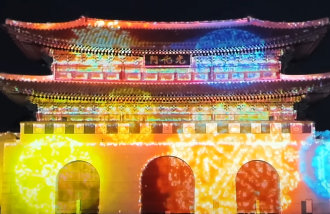[Opinion] Yellow Corvina Boxes
[Opinion] Yellow Corvina Boxes
Posted August. 31, 2004 22:04,
It has been a long time since the words like envelope, box, and bag lost their original meanings in Korean society. They have become metaphors for bribes. With the introduction of a new real-name system in financial transactions, the scale of bribes has grown bigger, making envelope obsolete. To carry todays larger bribes, boxes and bags are now in the limelight. This trend began with cake boxes, where checks amounting to tens of thousands of won to several million won were inserted and hidden. However, the amounts have grown so much that now boxes for ramen or apples are being used to hide caches of tens of millions of won. The amount of money collected as penalty from public servants punished for bribery is known to exceed, on average, 10 billion won each year. How much would the amount of undiscovered bribes be then?
According to investigations, a shopping bag can carry 30 million-50 million won, a 007-style suitcase can hold 100 million won, an apple box 200-300 million won, and a golf bag 300-400 million won. Investigators say that those who are accustomed to bribery can tell the amount of a bribe immediately when they lay their eyes on the box or bag carrying it. In the investigations of illegal fund raising activity during the last presidential election, a jaebol (plutocracy) group showed us that a 2.5-ton truck can carry 15 billion won, while another jaebol group taught us that a total of 1.12 billion won in bonds can be packed into the size of a monthly magazine.
While Ahn Sang-soo, the mayor of Incheon, was on a business trip to abroad, two boxes of dried yellow corvinas containing 200 million won in cash instead of yellow corvinas, were delivered to his sisters house in the same apartment complex. This bribe is notable for three characteristics: the circumspection required to send the bribe to the mayors sister, the timeliness of sending it right before the harvest festival by disguising it in yellow corvina boxes for a memorial service, and the anonymity of not disclosing the sender. However, what surprised us the most was the creativity needed to use yellow corvina boxes as the actual containers to deliver the bribe in.
Yellow corvinas are now precious, but in the past, they symbolized pinchpennies. There lived a man named Joreuk in Eumsung, North Choongcheong Province under King Youngjo in the Josun Dynasty. He would hang a yellow corvina off the ceiling and look at it every time he ate a spoonful of rice so that he could save his fish longer. This salt yellow corvina episode became one of the origins of the word jarin-gobi, meaning pinchpennies. Such a commoners fish in times when we had to have it with cold rice in water for a meal has now become a 200 million-won fish. The fish is not guilty of this corruption. Still, it suffers such humiliation only because it is caught near Korea.
Oh Myoung-chul, editorial writer, oscar@donga.com







